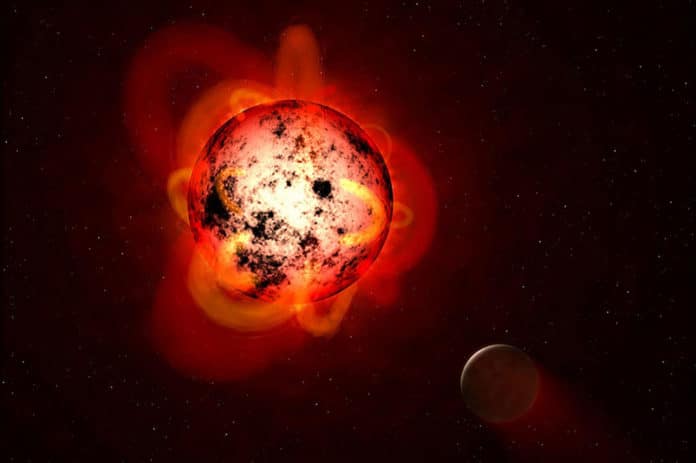Astronomers have discovered an ultra-short-period planet (USP) called GJ 367 b that orbits its star in just eight hours. This ultra-short-period planet is about the size of Mars and likely has a makeup similar to Mercury’s interior.
Using NASA‘s Transiting Exoplanet Survey Satellite (TESS), Astronomers made this discovery.
GJ 367 b orbits the star that lies 31 light-years from our sun. The planet’s proximity to its star allowed astronomers to pin down the properties of the planet that were not possible with previously detected USPs.
Astronomers also estimated that the planet is blasted with 500 times more radiation than Earth receives from the sun. Because of this radiation, the Earth’s day-side boils at up to 1,500 degrees Celsius. Under such extreme temperatures, any substantial atmosphere would have long vaporized away, along with any signs of life, at least as we know it.
Astronomers suggest the possibility that the planet has habitable partners. Its star is a red dwarf, or M dwarf — a type of star that typically hosts multiple worlds.
This discovery indicates more planets in this system, which could help scientists understand the origins of GJ 376 b and other ultra-short-period planets.
Team member George Ricker said, “For this class of star, the habitable zone would be somewhere near a month-long orbit.”
“Since this star is so close by and so bright, we have a good chance of seeing other planets in this system. It’s like there’s a sign saying, ‘Look here for extra planets!”
For about a month in 2019, TESS recorded a patch of the southern sky that included the star GJ 376. After analyzing the data, astronomers detected a transiting object with an ultra-short, eight-hour orbit. Several tests were performed to ensure the signal was not from a ‘false positive’ source, such as a foreground or background eclipsing binary star.
Astronomers later used the High Accuracy Radial Velocity Planet Searcher (HARPS) to determine the planet among the lightest planets discovered to date, with a radius that is 72 percent and a mass that is 55 percent, that of Earth’s. Such dimensions indicate that the planet likely has an iron-rich core.
MIT co-author Roland Vanderspek said, “We’re finding a Mars-sized planet that has the composition of Mercury. It’s among the smallest planets detected to date, and it’s spinning around an M dwarf on a very tight orbit.”
Journal Reference:
- KRISTINE W. F. LAM et al. GJ 367b: A dense, ultrashort-period sub-Earth planet transiting a nearby red dwarf star. DOI: 10.1126/science.aay3253
